Kauai, known as the “Garden Island,” is home to some of the most beautiful birds in Hawaii. From colorful forest birds to seabirds soaring over the ocean, Kauai is a paradise for bird watchers. The island’s unique landscape provides a safe home for many rare and native species that you won’t find anywhere else in the world. Whether you are hiking through the forests or relaxing on the beaches, the birds of Kauai are sure to amaze you with their beauty and variety.
15 birds of Kauai:
- Nene – Hawaii’s state bird, a type of goose.
- Iiwi – A bright red bird with a curved beak.
- Apapane – A small red bird that lives in the forests.
- Anianiau – A tiny yellow bird found in high forests.
- Pueo – A Hawaiian owl that hunts during the day.
- Laysan Albatross – A large seabird with long wings.
- Red-footed Booby – A seabird with bright red feet.
- White-tailed Tropicbird – A graceful bird with long tail feathers.
- Great Frigatebird – A seabird known for its large wingspan.
- Hawaiian Petrel – A rare seabird that nests on the island.
- Newell’s Shearwater – A black and white seabird.
- Hawaiian Duck – A native duck found in wetlands.
- Myna – A small brown bird with a loud call.
- Cattle Egret – A white bird often seen near animals.
- Zebra Dove – A small, striped dove that’s common in towns.
15 Birds of Kauai: A Comprehensive Guide to Kauai’s Avian Wonders
Kauai, often called the “Garden Island,” is a beautiful destination known for its rich natural landscapes, which include breathtaking forests, mountains, and coastlines. But what makes Kauai truly special is its incredible diversity of birds, many of which are found nowhere else in the world. In this guide, we will explore 15 fascinating birds of Kauai, looking into their habitats, behaviors, and the efforts being made to protect them.
1. Nene (Hawaiian Goose)
The Nene, or Hawaiian Goose, is one of Hawaii’s most famous birds, and for good reason—it is Hawaii’s state bird and holds special significance to the islands.
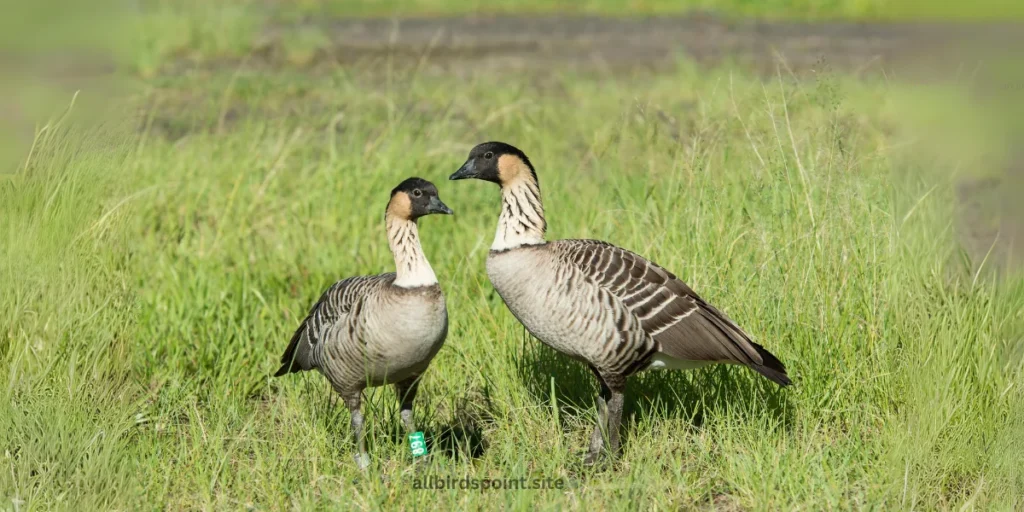
Appearance
The Nene is a medium-sized goose, smaller than the Canadian goose, with a black head, buff-colored cheeks, and brown feathers with subtle patterns on its body. Its legs and feet are partially webbed, allowing it to walk comfortably on rocky or uneven terrain, which is quite different from most waterfowl that need fully webbed feet for swimming.
Habitat and Behavior
Unlike other geese, the Nene does not spend much time near water. Instead, it prefers coastal areas, volcanic slopes, and grasslands. You can often spot them near hiking trails or even in local parks, grazing on grass and berries.
Conservation Status
Once on the brink of extinction with less than 30 individuals left in the wild, conservation programs have helped the Nene recover. Today, there are several thousand Nene in Hawaii, but they remain vulnerable due to habitat loss and predation by introduced species such as mongooses, cats, and dogs.
| Feature | Details |
|---|---|
| Scientific Name | Branta sandvicensis |
| Lifespan | 10-15 years in the wild |
| Size | 25-27 inches (63-69 cm) |
| Wingspan | 4.3-4.9 feet (1.3-1.5 meters) |
| Diet | Grass, leaves, berries |
| Habitat | Grasslands, coastal areas |
| Conservation Status | Vulnerable |
2. Iiwi (Scarlet Honeycreeper)
The Iiwi is one of the most eye-catching birds in Hawaii, known for its bright red feathers and uniquely shaped beak.
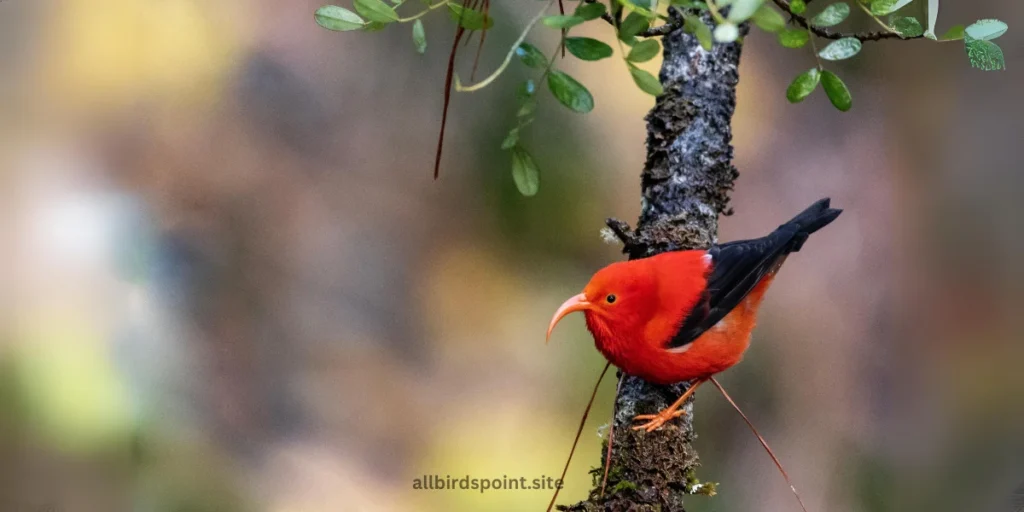
Appearance
The Iiwi is a small bird, easily recognizable by its striking red body, black wings, and long, curved beak. Its bright plumage makes it a standout in the forest. The bird’s curved beak is perfectly designed for feeding on the nectar of native Hawaiian flowers like the Ohia Lehua, which is essential to its diet.
Habitat and Diet
The Iiwi lives in high-elevation forests where native plants like the Ohia and Mamane trees grow. These trees provide nectar, which is the Iiwi’s primary food source. The bird’s long, curved beak helps it reach the nectar deep inside the flowers, a feeding behavior that is critical to the plant’s pollination process.
Conservation Status
Unfortunately, the Iiwi’s population is declining due to habitat destruction and diseases spread by mosquitoes, such as avian malaria and pox. The bird is now listed as threatened. Conservation efforts include habitat restoration and mosquito control programs to help protect this unique species.
| Feature | Details |
|---|---|
| Scientific Name | Drepanis coccinea |
| Lifespan | 6-10 years |
| Size | 5.5-6 inches (14-15 cm) |
| Wingspan | 8.3 inches (21 cm) |
| Diet | Nectar, insects |
| Habitat | High-elevation forests |
| Conservation Status | Threatened |
3. Apapane (Hawaiian Honeycreeper)
The Apapane is another species of honeycreeper found on Kauai, known for its vibrant red feathers and sweet song.
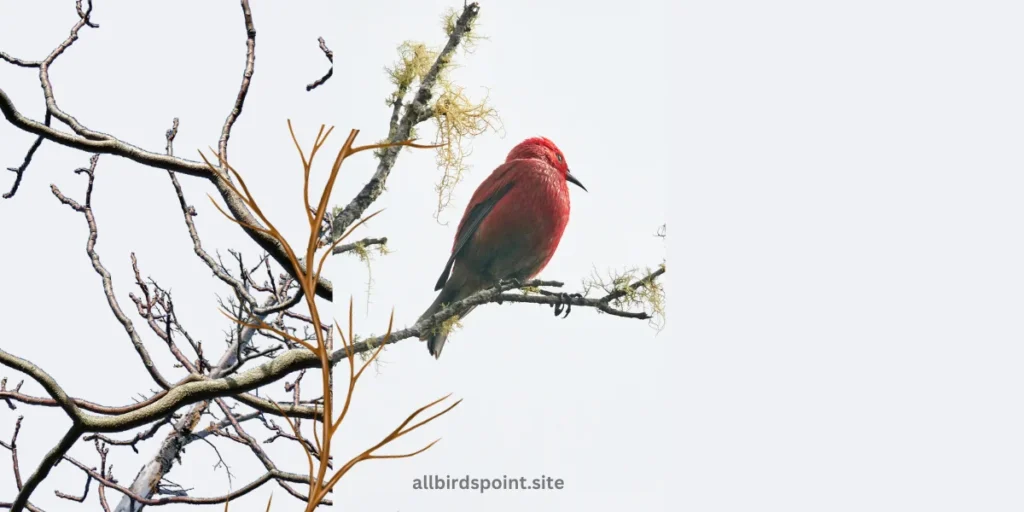
Appearance
With its crimson-red body, black wings, and a white undertail, the Apapane is a striking bird to observe. Though smaller than the Iiwi, its bright red feathers make it easy to spot flitting through the trees.
Habitat and Diet
The Apapane is commonly found in native forests, especially in areas where the Ohia tree is abundant. These trees bloom with red flowers, which provide the nectar that the Apapane feeds on. The Apapane also plays a crucial role in pollinating native plants, contributing to the health of Hawaii’s ecosystem.
Conservation Status
The Apapane is more common than the Iiwi, but it still faces threats from habitat loss and diseases. However, its adaptability has helped it maintain a relatively stable population, especially in protected areas.
| Feature | Details |
|---|---|
| Scientific Name | Himatione sanguinea |
| Lifespan | 8-10 years |
| Size | 5 inches (13 cm) |
| Wingspan | 8.5 inches (22 cm) |
| Diet | Nectar, insects |
| Habitat | Native forests |
| Conservation Status | Stable, but vulnerable |
4. Anianiau (Smallest Hawaiian Honeycreeper)
The Anianiau is the smallest species of honeycreeper found in Hawaii, and Kauai is the only island where it lives.
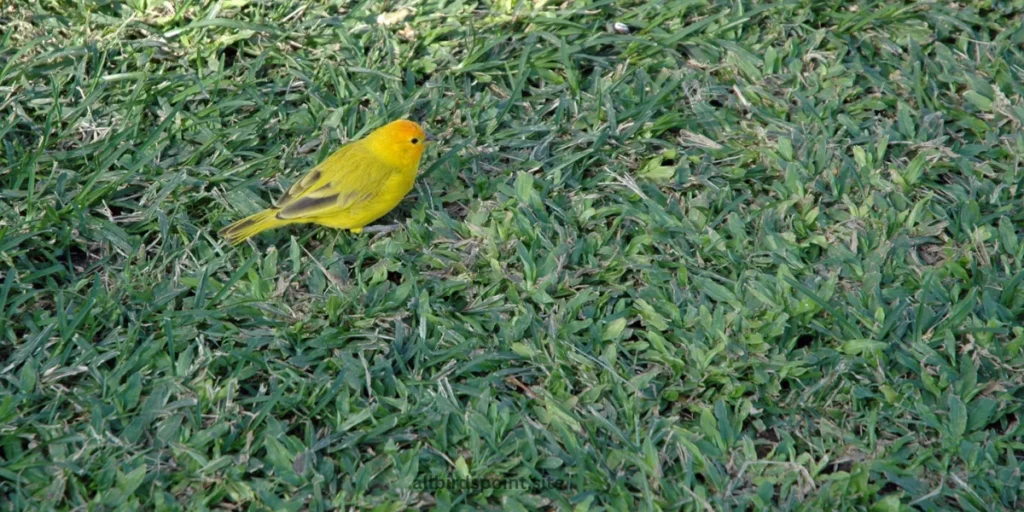
Appearance
This tiny bird is bright yellow with a sharp, slender beak, making it a joy to spot for birdwatchers. It is known for its small size, measuring just about 4 inches in length, and it is the smallest native honeycreeper in Hawaii.
Habitat and Behavior
The Anianiau prefers high-elevation forests, where it feeds on nectar and insects. It is often seen flitting around Ohia and Koa trees, using its slender beak to probe for food in flowers and under leaves. Because of its small size, the Anianiau can maneuver quickly through dense foliage, making it difficult to spot.
Conservation Status
The Anianiau is classified as vulnerable due to habitat loss, diseases, and climate change. Efforts to preserve high-elevation forests, where mosquitoes (carriers of bird diseases) are less common, are critical to the bird’s survival.
| Feature | Details |
|---|---|
| Scientific Name | Magumma parva |
| Lifespan | 6-9 years |
| Size | 4 inches (10 cm) |
| Wingspan | 7 inches (18 cm) |
| Diet | Nectar, insects |
| Habitat | High-elevation forests |
| Conservation Status | Vulnerable |
5. Pueo (Hawaiian Short-Eared Owl)
The Pueo, or Hawaiian Short-eared Owl, is a unique bird of prey that holds cultural significance in Hawaiian tradition.
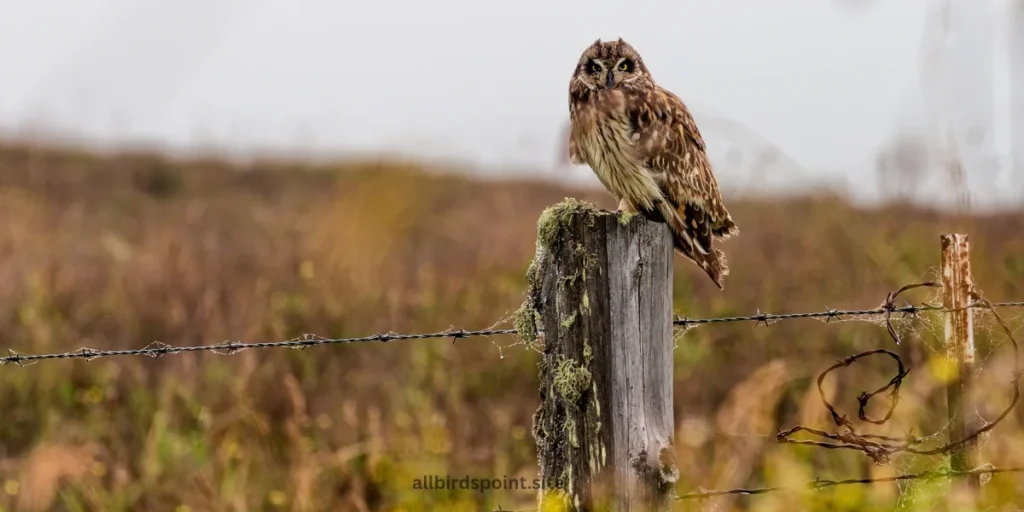
Appearance
The Pueo is a medium-sized owl with brown feathers and distinct yellow eyes. Unlike most owls that are nocturnal, the Pueo is active during the day, making it easier to spot while hiking or driving through open landscapes.
Habitat and Hunting Behavior
The Pueo can be found in open grasslands, forests, and even near agricultural areas. It hunts during the day, feeding on small mammals like rodents, as well as insects and birds. Its silent flight allows it to surprise its prey, and its keen eyesight helps it spot even the slightest movements.
Conservation Status
Though still found in healthy numbers, the Pueo population has declined in some areas due to habitat loss, road accidents, and predation by non-native species. Protecting the Pueo’s hunting grounds and nesting sites is essential for its continued survival.
| Feature | Details |
|---|---|
| Scientific Name | Asio flammeus sandwichensis |
| Lifespan | 10-15 years |
| Size | 13-17 inches (33-43 cm) |
| Wingspan | 3.3-3.7 feet (1-1.1 meters) |
| Diet | Small mammals, insects, birds |
| Habitat | Grasslands, forests, farmlands |
| Conservation Status | Vulnerable |
6. Laysan Albatross
The Laysan Albatross is one of the most impressive seabirds on Kauai, known for its large wingspan and graceful flight.

Appearance
This majestic bird has a wingspan that can reach up to 7 feet, making it one of the largest seabirds in Hawaii. The Laysan Albatross has mostly white feathers with dark wings and back. It is known for its long, elegant glides over the ocean.
Habitat and Nesting
Laysan Albatrosses are primarily found in coastal areas, especially around the northern part of Kauai, where they nest in colonies. These birds spend most of their lives at sea, only coming to land to breed. On Kauai, they nest on cliffs and beaches, laying a single egg each year.
Conservation Status
While the Laysan Albatross is not currently endangered, it faces threats from plastic pollution in the ocean, bycatch in fishing nets, and habitat destruction. Conservation efforts focus on reducing ocean pollution and protecting nesting sites.
| Feature | Details |
|---|---|
| Scientific Name | Phoebastria immutabilis |
| Lifespan | 40+ years |
| Size | 32 inches (81 cm) |
| Wingspan | 6-7 feet (1.8-2.1 meters) |
| Diet | Fish, squid |
| Habitat | Coastal cliffs, oceanic regions |
| Conservation Status | Near Threatened |
7. Red-Footed Booby
The Red-Footed Booby is a fascinating seabird that can often be seen flying or diving near Kauai’s coastline.

Appearance
The Red-Footed Booby is known for its distinct red feet, white or light brown body, and a pale blue beak. It is a medium-sized seabird, and its colorful feet make it easy to identify.
Habitat and Behavior
These birds nest in colonies on cliffs or in trees along the coast. They are excellent divers, plunging into the ocean from great heights to catch fish and squid. The Red-Footed Booby spends most of its time at sea, only returning to land to breed.
Conservation Status
Though not currently endangered, the Red-Footed Booby is affected by habitat loss and marine pollution. Efforts to protect coastal habitats and reduce plastic in the oceans help ensure their survival.
| Feature | Details |
|---|---|
| Scientific Name | Sula sula |
| Lifespan | 20+ years |
| Size | 28-30 inches (71-76 cm) |
| Wingspan | 4.6 feet (1.4 meters) |
| Diet | Fish, squid |
| Habitat | Coastal cliffs, at sea |
| Conservation Status | Least Concern |
8. White-Tailed Tropicbird
The White-Tailed Tropicbird is a stunning seabird known for its long, flowing tail feathers and graceful flight.
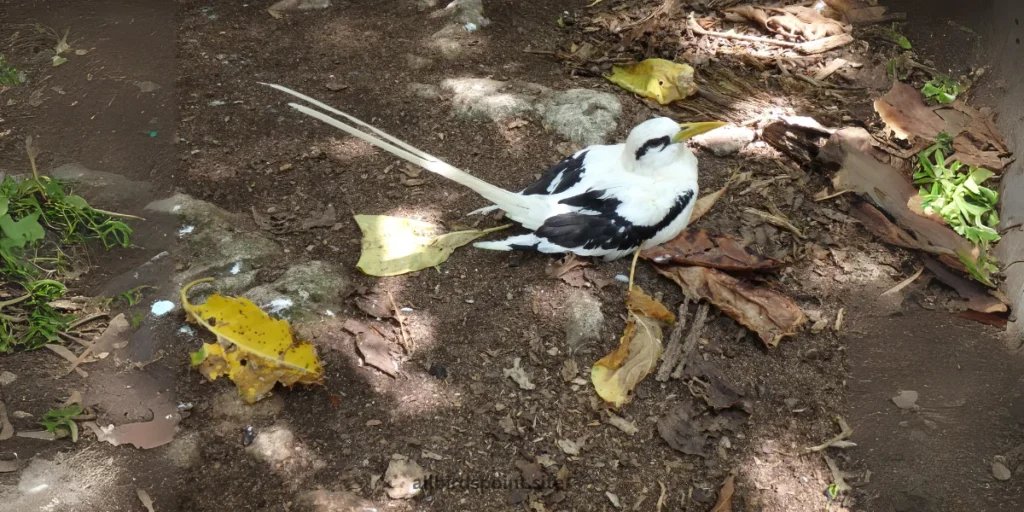
Appearance
This elegant bird is mostly white, with black markings on its wings and a long, thin tail feather that can extend up to two feet behind its body. Its bright white appearance makes it easy to spot against the blue sky or sea.
Habitat and Behavior
White-Tailed Tropicbirds are often seen soaring above cliffs and coastal areas. They nest in crevices or rocky ledges along the shore. When hunting, they dive into the ocean to catch fish and squid, often from great heights.
Conservation Status
The White-Tailed Tropicbird is not endangered, but like many seabirds, it faces threats from marine pollution and habitat destruction. Conservation programs that protect nesting areas are important for maintaining healthy populations.
| Feature | Details |
|---|---|
| Scientific Name | Phaethon lepturus |
| Lifespan | 16-20 years |
| Size | 30 inches (76 cm) (including tail) |
| Wingspan | 3 feet (91 cm) |
| Diet | Fish, squid |
| Habitat | Coastal cliffs, islands |
| Conservation Status | Least Concern |
9. Great Frigatebird
The Great Frigatebird is one of the most remarkable seabirds on Kauai, known for its large wingspan and unusual behavior.
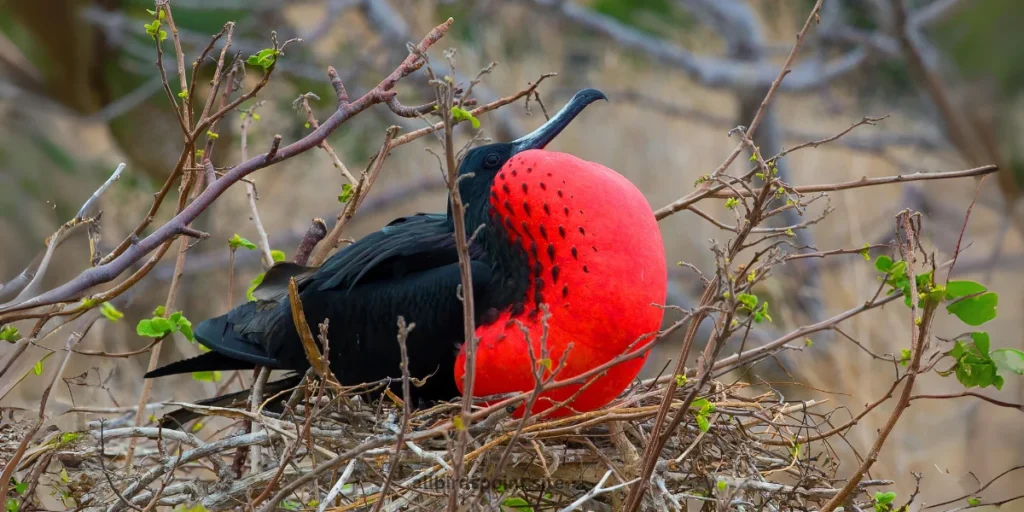
Appearance
With a wingspan of up to 7 feet, the Great Frigatebird is one of the largest seabirds in Hawaii. Males have a striking red throat pouch, which they inflate during courtship displays, while females have white underbellies. Their long, forked tails and glossy black feathers make them a sight to behold.
Habitat and Feeding
Frigatebirds are usually found soaring high above the ocean, where they are expert at stealing food from other birds, a behavior known as kleptoparasitism. They also feed on fish and squid, sn
atching them from the water’s surface without diving.
Conservation Status
The Great Frigatebird is not currently endangered, but it is susceptible to marine pollution and overfishing, which reduce the availability of food. Conservation efforts focus on protecting their feeding grounds and reducing human impact on marine ecosystems.
| Feature | Details |
|---|---|
| Scientific Name | Fregata minor |
| Lifespan | 30-40 years |
| Size | 33-45 inches (85-114 cm) |
| Wingspan | 7.5 feet (2.3 meters) |
| Diet | Fish, squid (often stolen from other birds) |
| Habitat | Coastal areas, open ocean |
| Conservation Status | Least Concern |
10. Hawaiian Petrel
The Hawaiian Petrel is a rare and elusive seabird that spends most of its life at sea, returning to land only to breed.

Appearance
This bird is medium-sized, with black and white plumage and a short, rounded tail. Its dark wings and white underbelly give it a striking contrast in flight. Hawaiian Petrels are known for their mysterious, nocturnal behavior.
Habitat and Breeding
Hawaiian Petrels nest in burrows dug into high-elevation slopes on Kauai. These birds are highly sensitive to disturbance and prefer remote, quiet areas for breeding. After raising their chicks, they spend the rest of the year flying across the open ocean, covering thousands of miles.
Conservation Status
The Hawaiian Petrel is listed as endangered due to habitat destruction, introduced predators, and collisions with power lines and buildings. Efforts to protect nesting sites and reduce threats from human infrastructure are essential to preserving this species.
| Feature | Details |
|---|---|
| Scientific Name | Pterodroma sandwichensis |
| Lifespan | 15-20 years |
| Size | 16 inches (40 cm) |
| Wingspan | 3 feet (91 cm) |
| Diet | Fish, squid |
| Habitat | Oceanic regions, high-elevation slopes for breeding |
| Conservation Status | Endangered |
11. Newell’s Shearwater
The Newell’s Shearwater is another seabird found on Kauai, known for its distinctive black and white plumage and unique call.
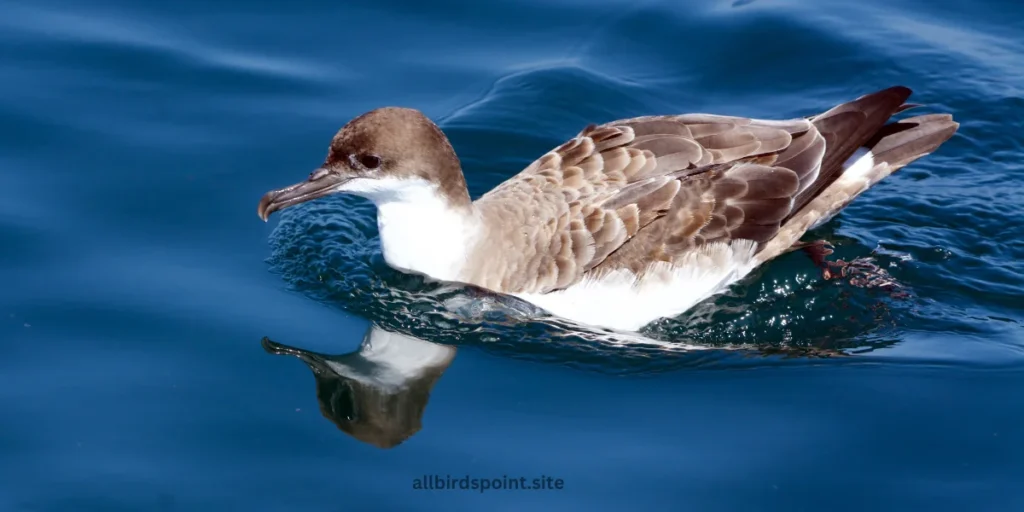
Appearance
This medium-sized bird has a black back and white underside, with a slender body and long wings. Its name comes from its “shearing” flight style, where it skims close to the water’s surface, using air currents to glide effortlessly.
Habitat and Feeding
Newell’s Shearwaters nest in burrows high on Kauai’s mountain slopes and cliffs. They are nocturnal feeders, hunting for fish and squid at night. Like many seabirds, they spend most of their lives at sea, returning to land only to breed.
Conservation Status
Newell’s Shearwaters are critically endangered, with their population declining due to habitat loss, introduced predators, and collisions with human-made structures. Conservation efforts include protecting nesting sites and reducing light pollution, which can disorient the birds during flight.
| Feature | Details |
|---|---|
| Scientific Name | Puffinus newelli |
| Lifespan | 15-20 years |
| Size | 12-14 inches (30-36 cm) |
| Wingspan | 30 inches (76 cm) |
| Diet | Fish, squid |
| Habitat | Open ocean, mountain slopes |
| Conservation Status | Critically Endangered |
12. Hawaiian Duck (Koloa)
The Hawaiian Duck, also known as the Koloa, is a native species that can be found in freshwater wetlands across Kauai.
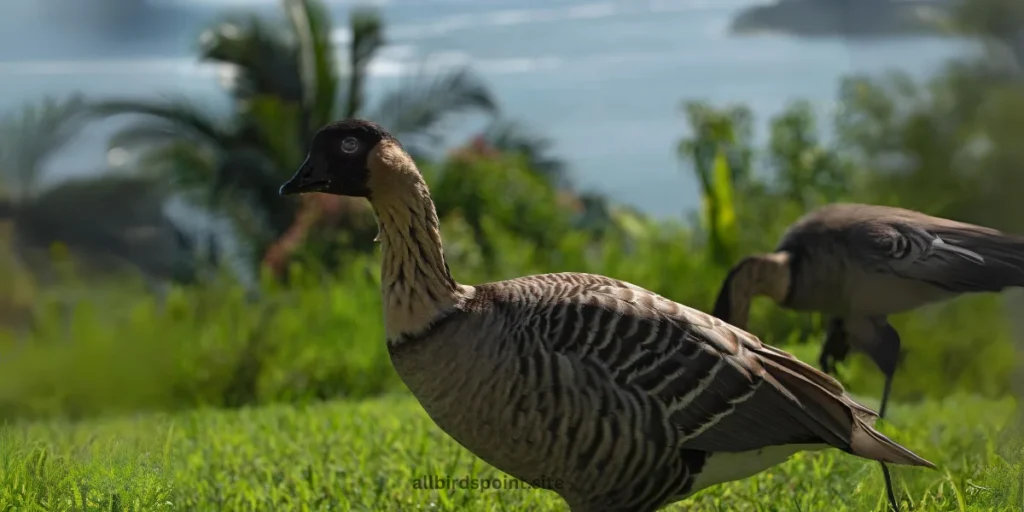
Appearance
This medium-sized duck has a brown body with lighter underparts and a blue-green speculum (a patch of iridescent feathers) on its wings. It closely resembles the familiar mallard but is slightly smaller and more uniformly colored.
Habitat and Behavior
Koloa are typically found in freshwater ponds, marshes, and streams, where they feed on aquatic plants, insects, and small fish. They are shy and tend to stay hidden in dense vegetation, making them difficult to spot.
Conservation Status
The Hawaiian Duck is vulnerable due to hybridization with introduced mallards, which can lead to the loss of the pure Koloa population. Efforts to remove non-native mallards and restore wetland habitats are helping to protect this important species.
Hawaiian Duck (Koloa)
| Feature | Details |
|---|---|
| Scientific Name | Anas wyvilliana |
| Lifespan | 10-15 years |
| Size | 20-23 inches (51-58 cm) |
| Wingspan | 35 inches (89 cm) |
| Diet | Aquatic plants, insects, small fish |
| Habitat | Freshwater wetlands, streams |
| Conservation Status | Vulnerable |
13. Myna
The Myna is an introduced species in Hawaii, known for its loud calls and bold behavior.
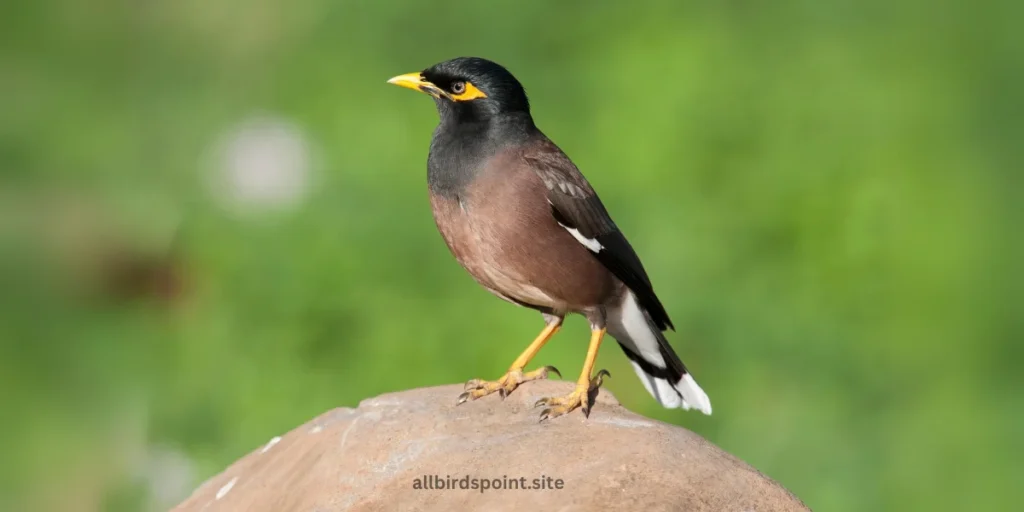
Appearance
The Myna is a medium-sized bird with brown feathers, a black head, and bright yellow patches around its eyes. It has a sturdy build and is often seen hopping around on the ground, scavenging for food.
Habitat and Behavior
Mynas are commonly found in urban areas, parks, and gardens, where they have adapted well to human presence. They are omnivores, feeding on insects, fruits, and scraps left behind by people. Their loud, chattering calls can often be heard in busy areas.
Conservation Status
As an introduced species, the Myna is not considered endangered. However, it has been known to outcompete native birds for food and nesting sites, contributing to the decline of some native species.
| Feature | Details |
|---|---|
| Scientific Name | Acridotheres tristis |
| Lifespan | 12-25 years |
| Size | 9-10 inches (23-25 cm) |
| Wingspan | 17 inches (43 cm) |
| Diet | Insects, fruits, scraps |
| Habitat | Urban areas, parks, gardens |
| Conservation Status | Least Concern |
14. Cattle Egret
The Cattle Egret is another non-native bird commonly seen in Kauai, often spotted near cattle or other large animals.

Appearance
This medium-sized bird is mostly white with a yellow beak and legs. During breeding season, it develops orange patches on its head, chest, and back, giving it a more colorful appearance.
Habitat and Behavior
Cattle Egrets are often found in grassy fields, pastures, and wetlands. They get their name from their habit of following cattle and other large animals, feeding on insects and small animals stirred up by the movement of the livestock. They are also commonly seen around farms and urban areas.
Conservation Status
Although not a native species, the Cattle Egret is widespread and thriving in Hawaii. Its introduction has had some ecological impacts, but it has also adapted well to the environment without causing significant harm to native species.
| Feature | Details |
|---|---|
| Scientific Name | Bubulcus ibis |
| Lifespan | 10-15 years |
| Size | 18-22 inches (46-56 cm) |
| Wingspan | 36-38 inches (91-96 cm) |
| Diet | Insects, small animals |
| Habitat | Grasslands, wetlands, near livestock |
| Conservation Status | Least Concern |
15. Zebra Dove
The Zebra Dove is a small, introduced bird that has become a common sight in Kauai’s towns and gardens.
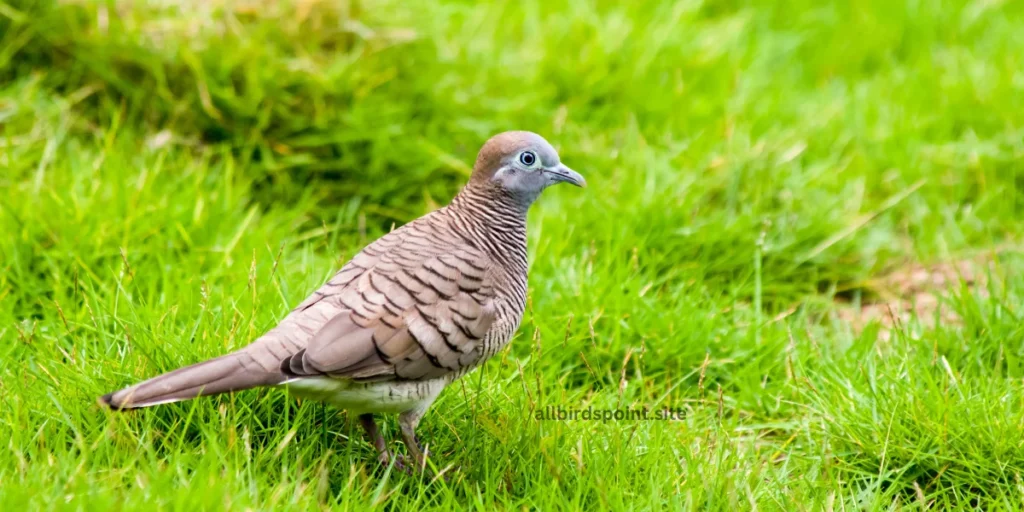
Appearance
This small dove has grayish-brown feathers with distinctive black and white stripes, or “zebra” patterns, on its body. It has a slender build and a calm demeanor, often seen foraging on the ground for seeds.
Habitat and Behavior
Zebra Doves are commonly found in urban areas, parks, and gardens, where they feed on seeds and small insects. They are known for their soft, cooing calls, which are pleasant and soothing to hear. These birds are not shy and can often be seen close to people.
Conservation Status
As an introduced species, the Zebra Dove is not considered endangered and is thriving in Kauai. Its presence does not pose a significant threat to native species, and it has become a well-loved bird for its gentle behavior.
Zebra Dove
| Feature | Details |
|---|---|
| Scientific Name | Geopelia striata |
| Lifespan | 10 years |
| Size | 7-8 inches (18-20 cm) |
| Wingspan | 11-12 inches (28-30 cm) |
| Diet | Seeds, small insects |
| Habitat | Urban areas, parks, gardens |
| Conservation Status | Least Concern |
Conclusion
The birds of Kauai are a true treasure, offering a glimpse into the island’s natural beauty and ecological significance. From the majestic Nene to the colorful Iiwi, each bird plays an essential role in maintaining the balance of Kauai’s unique ecosystem. However, many of these birds face threats from habitat destruction, climate change, and introduced predators. Conservation efforts are crucial to ensure that future generations can continue to enjoy the rich birdlife that makes Kauai so special. Whether you’re an avid birdwatcher or just someone who loves nature, the birds of Kauai are sure to leave a lasting impression.
FAQs
1. What is the state bird of Hawaii?
The Nene (Hawaiian Goose) is Hawaii’s state bird, native to the islands and known for its unique adaptation to land habitats.
2. Which bird on Kauai has bright red feathers?
The Iiwi, also known as the Scarlet Honeycreeper, is famous for its vibrant red feathers and long, curved beak.
3. Are there owls on Kauai?
Yes, the Pueo (Hawaiian Short-Eared Owl) is found on Kauai and is active during the day, unlike most owls.
4. What seabird has a wingspan of 7 feet?
The Laysan Albatross has a wingspan of up to 7 feet and is known for its graceful gliding over the ocean.
5. Which bird is known for its red feet?
The Red-Footed Booby is easily recognizable by its bright red feet and can often be seen near Kauai’s coastlines.
6. Are there endangered birds on Kauai?
Yes, birds like the Hawaiian Petrel and Newell’s Shearwater are critically endangered due to habitat loss and other threats.
7. What bird is commonly found near cattle on Kauai?
The Cattle Egret often follows livestock, feeding on insects and small animals stirred up by their movement.
8. What is the smallest Hawaiian honeycreeper on Kauai?
The Anianiau is the smallest honeycreeper, found only on Kauai and known for its bright yellow color.
9. Can I see tropical birds on Kauai?
Yes, birds like the White-Tailed Tropicbird with its long, elegant tail feathers can be seen near the island’s cliffs.
10. Are mynas native to Kauai?
No, the Myna is an introduced species, commonly found in urban areas across Kauai.
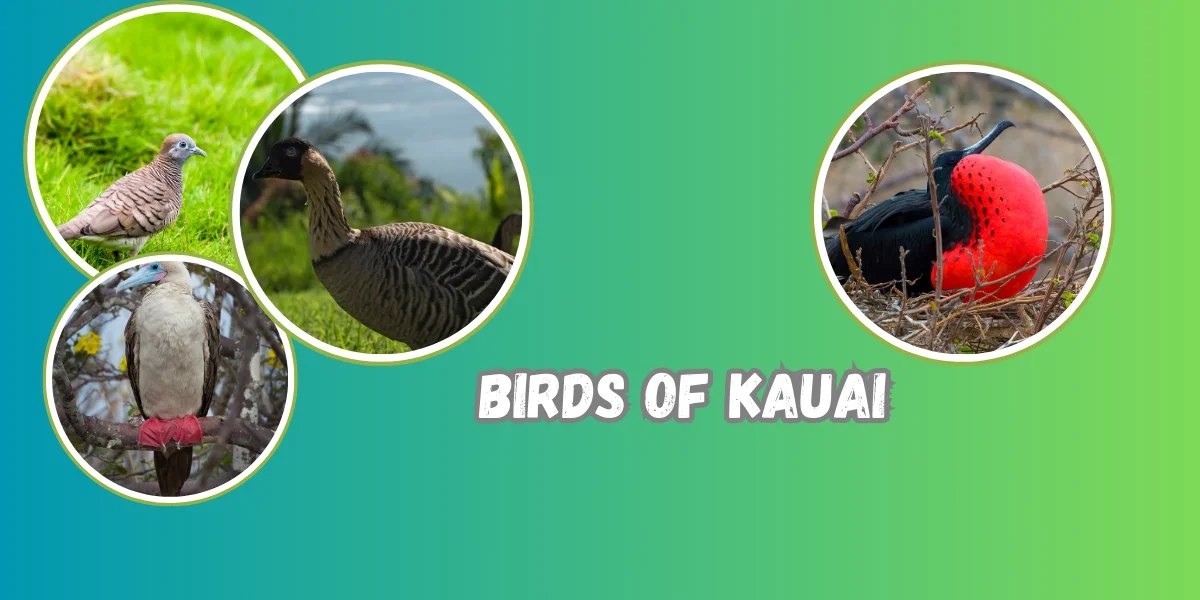
6tu0rs
ezkp2t